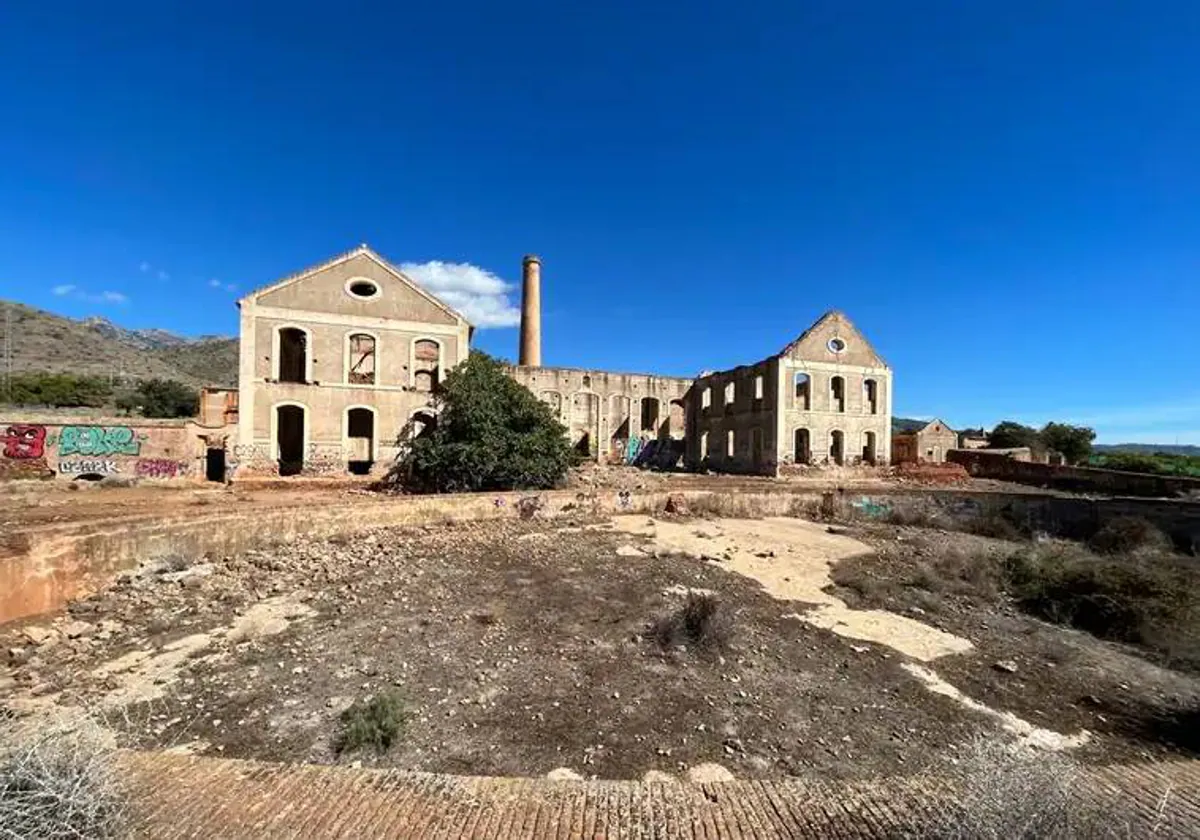

Sections
Highlight

Eugenio Cabezas
Nerja
Wednesday, 25 October 2023, 18:16
The San Joaquín sugar cane factory in Maro operated intermittently between 1880 and 1930 and now there are plans to develop the area with a luxury hotel, golf course and homes.
The industrial complex owned by the Larios family is included in the project to reclassify 250 hectares of rural land to build a golf course, almost 500 homes and convert it into a luxury hotel
The San Joaquín sugar cane factory in Maro (Nerja) operated intermittently between 1880 and 1930. Since then the building has been abandoned, although there are plans by its current owners, the Larios company, to convert the area into a large luxury hotel and develop almost 500 new luxury homes as well as a golf course.
The project would see an investment of more than 311 million euros and the Junta de Andalucía is currently looking at an environmental feasibility study following the approval of an urban development agreement between the town hall and Larios in 2021.
However, due to the abandonment and risk of collapse of the old industrial complex, it has been included on the ‘Red List’ of Historical Heritage, a list compiled by the Hispania Nostra association.
In the province of Malaga there are a further twenty sites included on this list, whose aim is to publicise, raise awareness about and ultimately campaign for the restoration of Spain’s industrial heritage.
The latest additions, prior to the Maro sugar cane factory were the watchtower on Nerja’s Arroyo de la Miel at the end of 2021, a farmstead owned by the Junta de Andalucía and the remains of an old waterwheel in Martiricos, both of which are in Malaga city, in 2022.
The Hispania Nostra association considers that over the years the Maro factory “has undergone some deterioration due to lack of maintenance and the effects of the weather". The association goes on to explain on its website (www.listaroja.hispanianostra.org), "The buildings and structures show obvious signs of wear and tear, with cracked walls and damaged roofs. Vegetation has invaded some parts of the complex, contributing to the degradation of the structures.” It concluded that restoration would be difficult due to the deterioration of the building and machinery as well as signs of vandalism.
The Hispania Nostra Red List is a tool for social participation created with the aim of publicising, raising awareness and taking action on heritage buildings in Spain that are at risk of disappearing. It is a call to action to prevent them ending up on the ‘Black List’ of buildings that are beyond restoration or have disappeared completely.
Instead it hopes that buildings, like the Maro factory, will be restored and placed on its ‘Green List’, as has recently happened with the Acipino Roman ruins in Ronda. The association has a committee of experts who review and study, on a voluntary basis, each application received for inclusion on the Red List.
The sugar industry in Andalucía dates back to the 10th century, but with the arrival of the Industrial Revolution the sector underwent major development, especially in coastal areas. The Maro sugar mill would change ownership several times in the following decades, until finally, in the 18th century, as a result of the marriage of José Miguel Cañaveral's heiress to the Marquis of Salar, Fernando Pérez del Pulgar, it passed into the hands of the Pérez del Pulgar family.
By the mid-19th century, approximately three quarters of the original inheritance was in the possession of Joaquín Pérez del Pulgar, who owned several properties in the Nerja area.
After Pérez del Pulgar’s death his sons inherited the property and it was subsequently sold to the Banco Hipotecario. The Marquis of Tous would acquire the building, although shortly afterwards it would be transferred again, this time to the Sociedad Azucarera Larios (1930).
During the last half of the 19th century and the first half of the 20th century, sugar cane cultivation and sugar production played a major part in Malaga’s economy. However, over time the sector experienced a significant decline and today only the only working sugar cane factory in Spain is the Ingenio Nuestra Señora del Carmen in Frigiliana.
Publicidad
Publicidad
Publicidad
Publicidad
Esta funcionalidad es exclusiva para registrados.
Reporta un error en esta noticia

Debido a un error no hemos podido dar de alta tu suscripción.
Por favor, ponte en contacto con Atención al Cliente.

¡Bienvenido a SURINENGLISH!

Tu suscripción con Google se ha realizado correctamente, pero ya tenías otra suscripción activa en SURINENGLISH.
Déjanos tus datos y nos pondremos en contacto contigo para analizar tu caso

¡Tu suscripción con Google se ha realizado correctamente!
La compra se ha asociado al siguiente email
Comentar es una ventaja exclusiva para registrados
¿Ya eres registrado?
Inicia sesiónNecesitas ser suscriptor para poder votar.